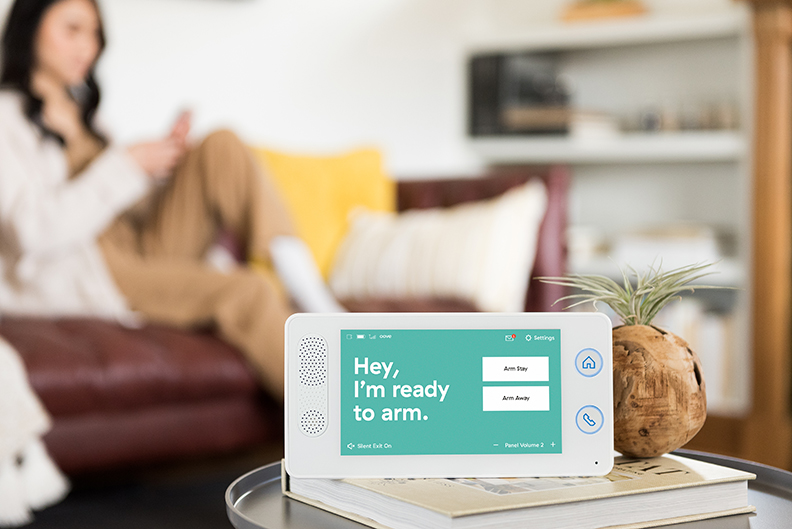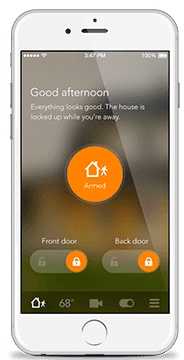
A deadbolt can help you secure your house and keep intruders out. It's harder to tamper than other types, so it is an effective tool for protecting your home. But deadbolts may be susceptible to shimming or other types of bypassing locks.
Installing deadbolts correctly is important. Incorrect installation or the use of incorrect parts can lead to a malfunctioning lock that invites burglars.
The deadbolt's most common parts are the actual bolt, thumb latch, and turnpiece. These pieces can all be found on the exterior of your door and are important for operating your deadbolt.
This bolt is a metal frame that locks into your door. The cylinder can be used to unlock or lock the door. When it is locked, the cylinder retracts into the faceplate.

There are a few different types of parts within the cylinder of your lock, including the keyway, the rotor, and the spring. The key will align with keyway when it is inserted, allowing the rotor of the lock to rotate. The cotter pin is an additional piece of the cylinder that undergoes pressure from a spring, and it will align with the grooves in a key to form a pattern that releases the bolt.
Cotter pins make up a large part of deadbolts. They are made out of flexible metal, which adds tension, making it impossible for the rotor to move unless the pin set is aligned correctly.
Another part of the cylinder is the spring, which is a coiled piece of metal that adds tension to the cotter. The spring prevents the rotor from rotating when it is activated.
Stators and keyways are two additional components that are often used in deadbolts. The stator acts as an extra component in the cylinder and interacts to enable the rotor turn when the correct keys are inserted.
The keyway can be found on the outside of the lock cylinder. It connects a number of pins within. When you insert the key into the cylinder it will align the pins and unlock the lock.

A rotor can be described as a piece of small metal that sits within the cylinder on your lock. When you insert a compatible cylinder key, it turns. This is what releases the bolt when you pull it out of the lock.
Some parts of a Deadbolt can break or wear over time. These include the lock springs and key. If any of these parts is damaged, it will be necessary to replace the parts with new parts or to repair them to restore functionality.
There are several websites that provide information on how to install kwikset parts. You can consult a local locksmith to find out which parts you'll need to make your deadbolt work again.
FAQ
Which home surveillance camera system is best?
A home security system with cameras can help protect your family against intruders. These systems are easy to use and they provide great benefits for both homeowners and renters. You can monitor your property remotely using your smartphone or tablet, computer, and other mobile devices.
Can I put in a security cam by myself?
Yes! You can install a home alarm yourself if you know what you're doing. If you don't want to do it yourself, then hire an expert who will be able to help you install it properly.
What price should I pay to have alarm monitoring?
Alarm monitoring costs vary depending on how often you want it monitored, what kind of equipment you need, and whether you are looking at an all-inclusive package or just one monthly fee.
Statistics
- (In my experience, the discount on my home insurance covered about 25 percent of the subscription of an average plan, but your mileage may vary depending on your location and the size of your home.) (theverge.com)
- Unlike other online safety services that charge up to 100 percent of your monthly fee, Cove charges no upfront fees and has no hidden costs.
- Related questionsHome security systems that are 100% DIY (safewise.com)
- Depending on your insurance, 24/7 professional monitoring may qualify you for as much as 15% off your premium. (safewise.com)
External Links
How To
How to test a security system at home
How to test a Home Security System
The first step is to install your alarm monitoring software on your computer. The latest version should be downloaded from the manufacturer's web site. Next, set up your phone number to allow monitoring centers to route calls directly to your number. If you don’t know how to do that, you can ask your local service provider. You are now ready to test your setup!
There are two main ways to test your system. The first method is to use an empty device. This is a fake device, which appears just like the real thing. Although it has all the same features of the real thing, it doesn't actually function. The sound it makes when it turns on is identical to the real thing, if it was functioning properly. A dummy device comes with some limitations. First, it won't tell you anything about the actual functionality of your system. Second, it might look suspicious to people who see it sitting around. It might also be stolen.
Second, you can test your system by hand. You'll need to test every aspect of the system, and ensure it works correctly. This would include checking that the motion sensors and cameras work correctly, the door locks function properly, and the camera recording is working. You should test each of these items at least once a week. Once you have tested everything thoroughly you can be confident that your system works well.